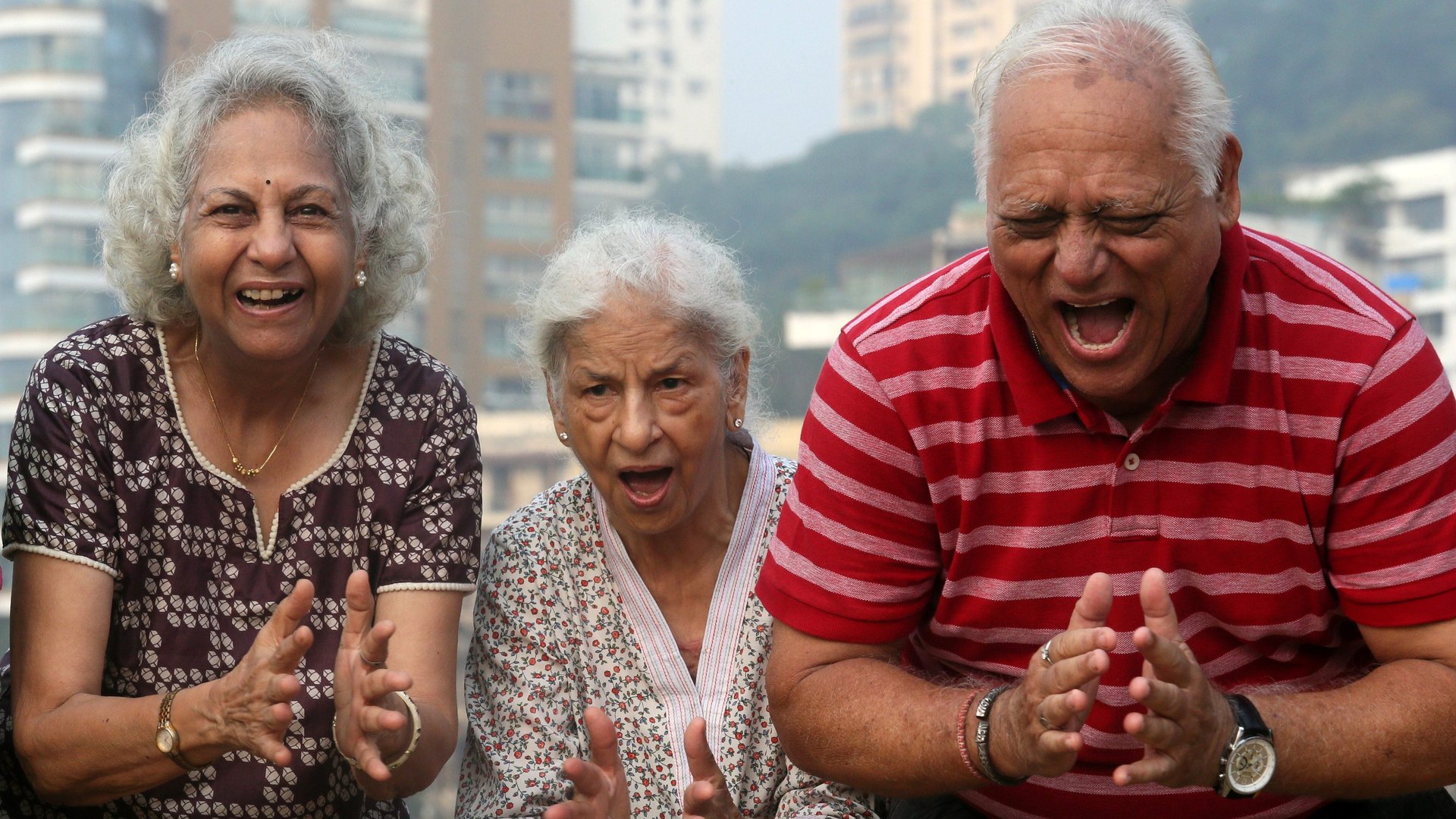Can’t make your video go viral on TikTok? Maybe your grandma can help
The video begins with an elderly lady, casually stirring the contents of a teacup. Just as she swirls the teabag, a younger face, bright and full of life, appears on the screen.


The video begins with an elderly lady, casually stirring the contents of a teacup. Just as she swirls the teabag, a younger face, bright and full of life, appears on the screen.
“What are you drinking dadi (grandma)?” the younger one asks.
“Green tea,” responds the old lady, visibly irate and defiant.
“Green tea! Whatever for?”
“I’m trying to lose weight,” the grandma says in Hindi, heavily laden with rustic Punjabi.
Taken aback, the younger of the two turns to the camera: “She’s drinking green tea to lose weight even in her old age! Dadi, what will you do after losing all that weight?”
After a few more moments of sparkling banter, the clip ends with a lament: “Dadi and her new fads.”
The 60-second shoot, created by the certified “popular creator” RockingDadi has amassed over 3 million views, since it was uploaded on the Chinese video-sharing platform TikTok on Dec. 9.
This is just a small sample of the veritable online phenomenon that Indian grandmothers have become. They now appear alongside their savvy grandchildren as equal participants in socially-generated content—green tea, or otherwise.
More often than not, the TikTok dadi doesn’t conform to the stereotype of a solemn, elderly lady, confined to her routine, dull life. She sings with reckless abandon, keeps step with her grandchildren as they dance without a care in the world, and even lifts weights.
The best way to fully understand the phenomenon is to watch the videos:
These TikTok dadis may end up altering the demography of social media content in India.
India’s senior netizens
The new wave notwithstanding, senior citizens in India are still on the margins when it comes to internet use, says Sukriti Seth, a consultant at the Noida-based TechSciResearch. “Currently, only 4% of senior citizens (in India) use the internet. Of these, around 66% access the internet at least once a day,” says Seth.
The elderly have a preference for apps that help them connect with their children and extended families. Facebook and WhatsApp are their favourites, says Seth. However, as per TechSciResearch’s 2019 estimates, there were only 1.8 million and 600,000 male and female users, respectively, above the age of 65 on Facebook in India.
This, however, may rise with the wave of cross-generational content shaking the monopoly of young people on social media. “As more people join (TikTok) from different age groups, family-based content is getting increasingly popular and likeable,” says Seth.
TikTok’s algorithm, which brings content to users from far and wide, helps videos acquire instant virality. The platform is fertile ground for content that wouldn’t have much currency on YouTube or Instagram, for instance. Consequently, dadis are joining TikTok’s self-styled life coaches and English tutors and, in the process, proving that the TikTok stage is not reserved for Gen Z-ers.
The “dadi” hashtag, for instance, has amassed almost 177 million views on TikTok, with variations like #dadirocks and #mydadi only multiplying the figure. The green tea-drinking grandmother of the RockingDadi profile alone, has garnered 1.5 million followers and over 20 million likes for its 130-odd videos.
The explosive popularity of the profile, composed of a dynamic dadi-granddaughter duo who take turns being fed up with each other, hinges on the subversive notion of an elderly lady who is not too old to participate in the trends of a typically young platform. The seemingly ingenious strategy leverages the more than 250 million views of the “rockingdadi” hashtag to turn this dadi into an internet phenom.
A new generation of creators
This phenomenon, though, is not unique to TikTok. The trend of cross-generational content has been gaining ground across platforms, according to Subrat Kar, co-founder of Delhi-based online video data company, Vidooly.
“Videos featuring grandfathers and grandmothers have already been viral on YouTube for the last few years. There have been various food category (YouTube) channels like Village Food Factory, Mastanamma and Grandpa Kitchen that have over a million views and subscribers,” says Kar.
“TikTok, saw the potential of adding senior citizen creators on their platform. It’s safe to say that the experiment paid off,” added Kar.
The experiment has even taken senior citizen creators beyond the confines of the smartphone screen.
Earlier this year, an 85-year-old TikTok grandmother named Mary Joseph Mampilly from the south Indian state of Kerala was offered a role in a regional film after videos shared by her grandson went viral. Mampilly was reportedly the impetus that her grandson Jinson needed when his initial videos on TikTok had failed to garner many likes and followers.
Once she graced the smartphone screen, Jinson’s followers grew exponentially, almost counter-intuitively. And the sudden virality of the videos signalled a much larger hunger for dadis on TikTok in India.
The paradox of a TikTok dadi—a senior citizen on an app that owes its success almost entirely to teenagers and young adults—is a fascinating interplay of several opposing factors: youth and age, the elderly and the tech-savvy, and a social media trend that finds its trendsetter in your grandmother.
The TikTok dadis are getting off the rocking chair and well, just rocking it—plain and simple.